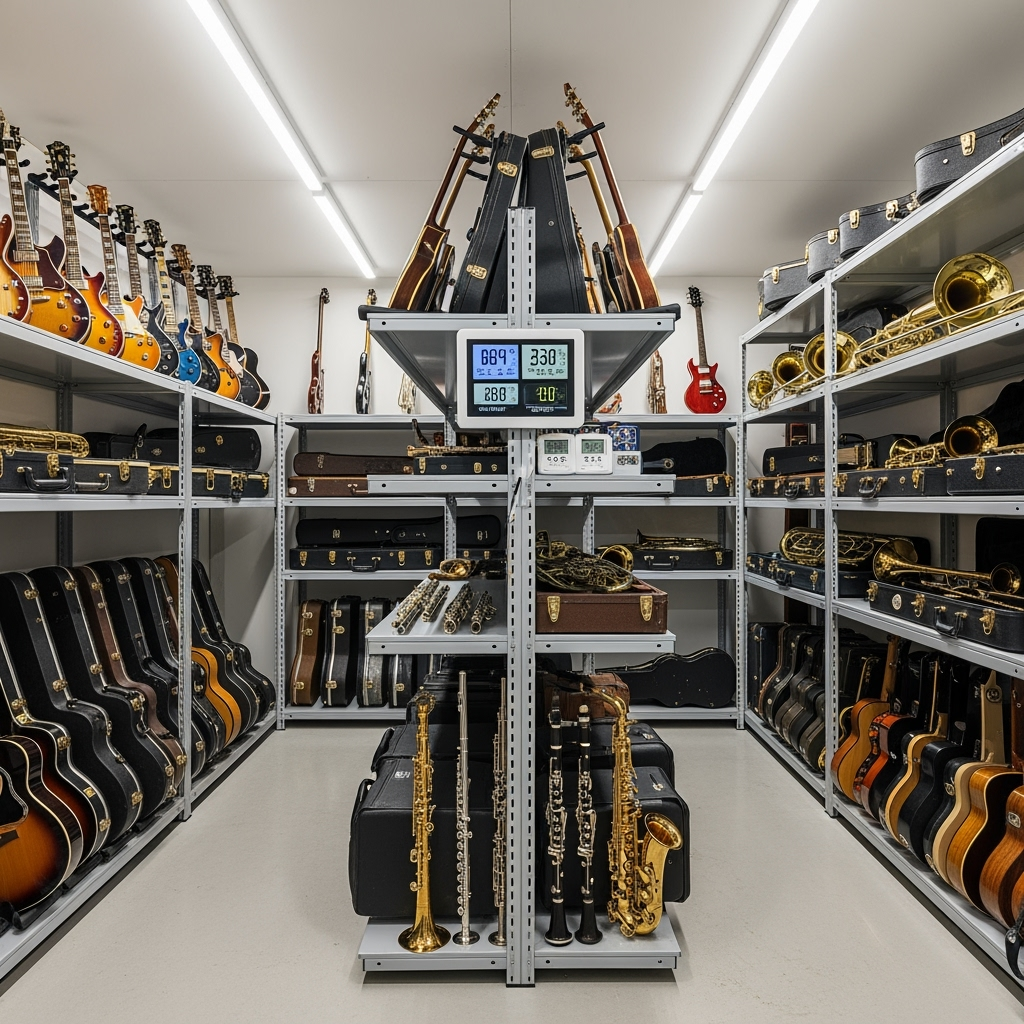
Understanding the Importance of Temperature Control for Musical Instruments
Musical instruments represent significant investments that require specialized care during storage and moving transitions. Temperature fluctuations can cause serious damage to wooden instruments, affect the tuning of brass and wind instruments, and impact the integrity of strings and other sensitive components. This comprehensive guide will help you protect your musical investments with proper climate-controlled storage solutions.
Critical Temperature and Humidity Requirements
Different types of instruments have specific environmental needs:
- Wooden Instruments: 45-70% relative humidity, 65-75°F temperature range
- Brass Instruments: 35-50% relative humidity, 60-75°F temperature range
- String Instruments: 40-60% relative humidity, 65-72°F temperature range
- Pianos: 45-70% relative humidity, 65-72°F temperature range
Preparing Your Instruments for Storage
Before moving your instruments to storage, follow these essential preparation steps:
- Clean and condition all instruments according to manufacturer specifications
- Loosen strings on string instruments (but don’t completely detune)
- Remove reeds from woodwind instruments
- Empty water keys on brass instruments
- Use appropriate cases and covers designed for your specific instruments
Choosing the Right Climate-Controlled Storage Solution
When selecting a storage facility for your musical instruments, consider these crucial factors:
- 24/7 climate control monitoring systems
- Backup power systems for continuous temperature regulation
- Security features to protect valuable instruments
- Easy access for regular maintenance and checks
- Clean, dust-free environment
Monitoring and Maintenance During Storage
Regular monitoring ensures your instruments remain in optimal condition:
- Install humidity monitors in storage units
- Check instruments monthly for any signs of damage
- Maintain proper positioning of instruments in storage
- Keep detailed records of environmental conditions
- Respond quickly to any temperature or humidity fluctuations
Special Considerations for Different Instrument Types
Specific instruments require additional care during storage:
Wooden Instruments
- Use humidifiers in dry conditions
- Store away from direct sunlight
- Keep off concrete floors
- Use breathable covers
Brass Instruments
- Store completely dry to prevent corrosion
- Use anti-tarnish strips in cases
- Keep valves and slides lubricated
String Instruments
- Store in hard cases with proper support
- Use humidity control packets
- Keep bridges and necks properly aligned
Emergency Preparedness
Develop an emergency plan for protecting your instruments:
- Keep contact information for instrument repair specialists
- Have backup power solutions ready
- Know evacuation procedures for extreme weather
- Maintain proper insurance coverage
Tips for Moving Day
When transporting instruments to storage, follow these guidelines:
- Use climate-controlled vehicles when possible
- Avoid extreme temperature changes
- Keep instruments in cases during transport
- Use proper lifting techniques
- Pack instruments securely to prevent movement
Professional Services and Resources
Consider these professional services for additional support:
- Professional instrument movers
- Climate control specialists
- Insurance providers for musical instruments
- Instrument maintenance experts
Conclusion
Proper storage of musical instruments requires careful attention to temperature and humidity control. By following these guidelines and utilizing climate-controlled storage solutions, you can ensure your valuable instruments remain in excellent condition during moves and transitions. Remember to regularly monitor your stored instruments and respond quickly to any environmental changes that could affect their condition.










Leave a Reply